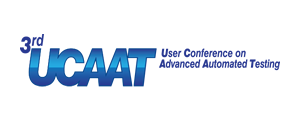With more than forty years of experience as an information systems professional at commercial and nonprofit organizations, Lee Copeland has held technical and managerial positions in applications development, software testing, and software process improvement. Lee has developed and taught numerous training courses on software development and testing issues and is a well-known speaker with Software Quality Engineering. Lee presents at software conferences in the United States and abroad. He is the author of the popular reference book, A Practitioner’s Guide to Software Test Design.
About the Keynote Presentation
The Mismeasure of Software: The Last Talk on Metrics You’ll Ever Need to Hear
It seems that most organizations have some kind of metrics program; and almost all of them are ineffective. Lee Copeland first explains the concept of “measurement” and then describes two key reasons for these almost universal failures. The first major mistake people make is forgetting that the model we are using for measurement is not necessarily reality. The second major blunder is treating ideas as if they were real things and then counting them. Lee describes the “Four Don’ts of Metrics” – don’t measure it unless you know what it means; don’t measure it if you’re not going to do something with the measurement; no matter what else you do, don’t turn your measurement into a goal; and focus your measurements on accomplishments, not effort. Over the years, Lee has discovered his favorite project indicator that is not a measurement at all. You’ll be surprised to learn what it is. In conclusion, Lee shares his Zeroth Law of Metrics to guide your program to success.
About the Tutorial Presentation
Pragmatic Testing: What To Do When Your World Is Messy
Often, books, articles, and presentations begin with phrases such as “now that the requirements are complete,” “now that the testing process is defined”, “now that the team is fully staffed”, or other similar statements. However, most of us live in a world in which these foundations of our work are often not available. Lee Copeland describes a pragmatic approach to testing when your world is messy. Typical messy problems include a lack of organizational commitment to testing, poor system requirements, insufficient stakeholder involvement, ineffective testing processes, poor communication, separation of testers from developers, and lack of tester professionalism. Lee presents a set of effective responses you should consider when you find yourself in these messy situations. Then, Lee shows you how to determine the underlying causes of organizational messiness as a starting point for effective improvement. He describes how to determine the root causes of your problems and implement effective solutions when the resolution is within your sphere of influence and also when it is outside of your control. Join Lee for an examination of both pragmatic testing practices and effective improvement activities.
In partnership with:
Our partner conferences:
If you would like to be a partner in organizing the conference,
please read the details here


















